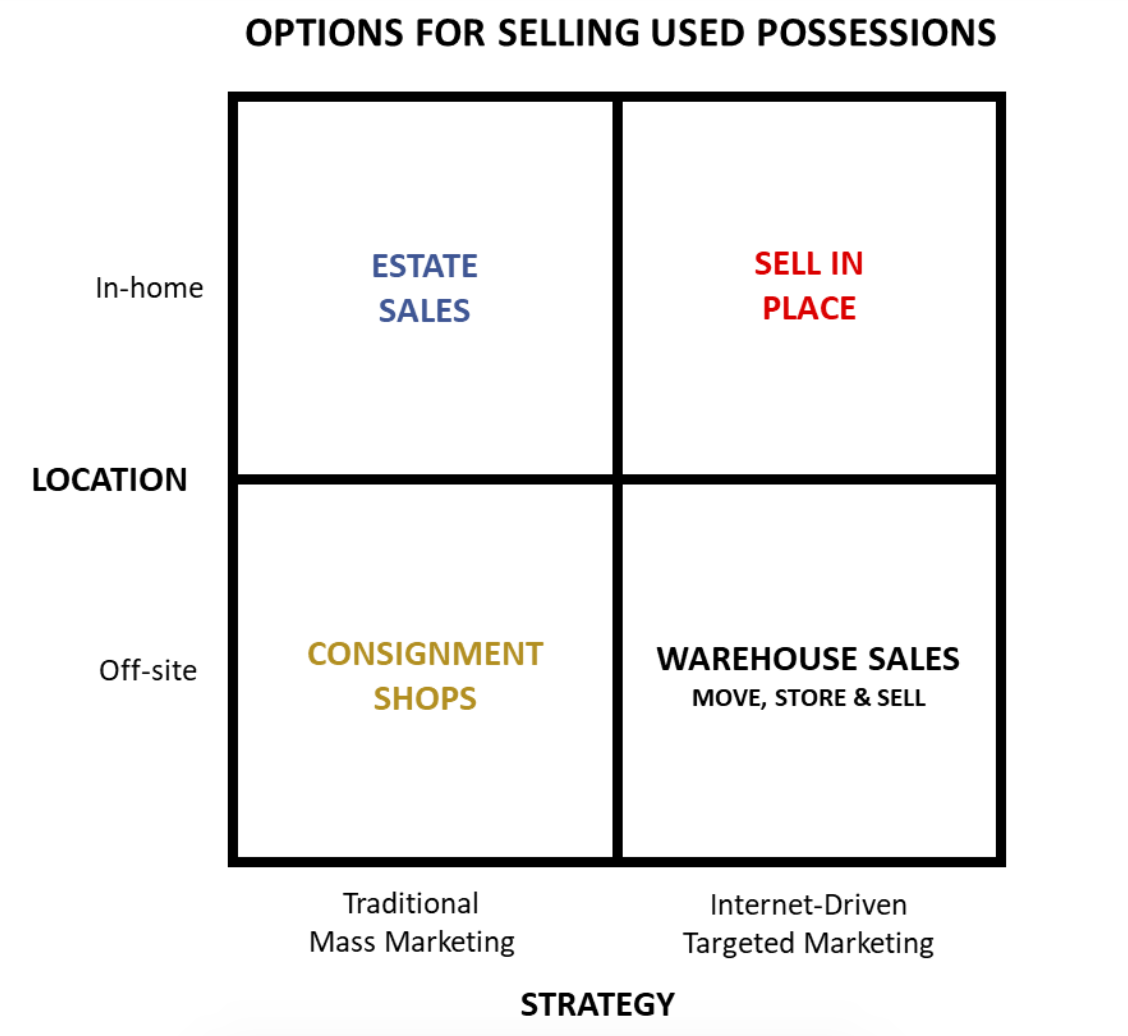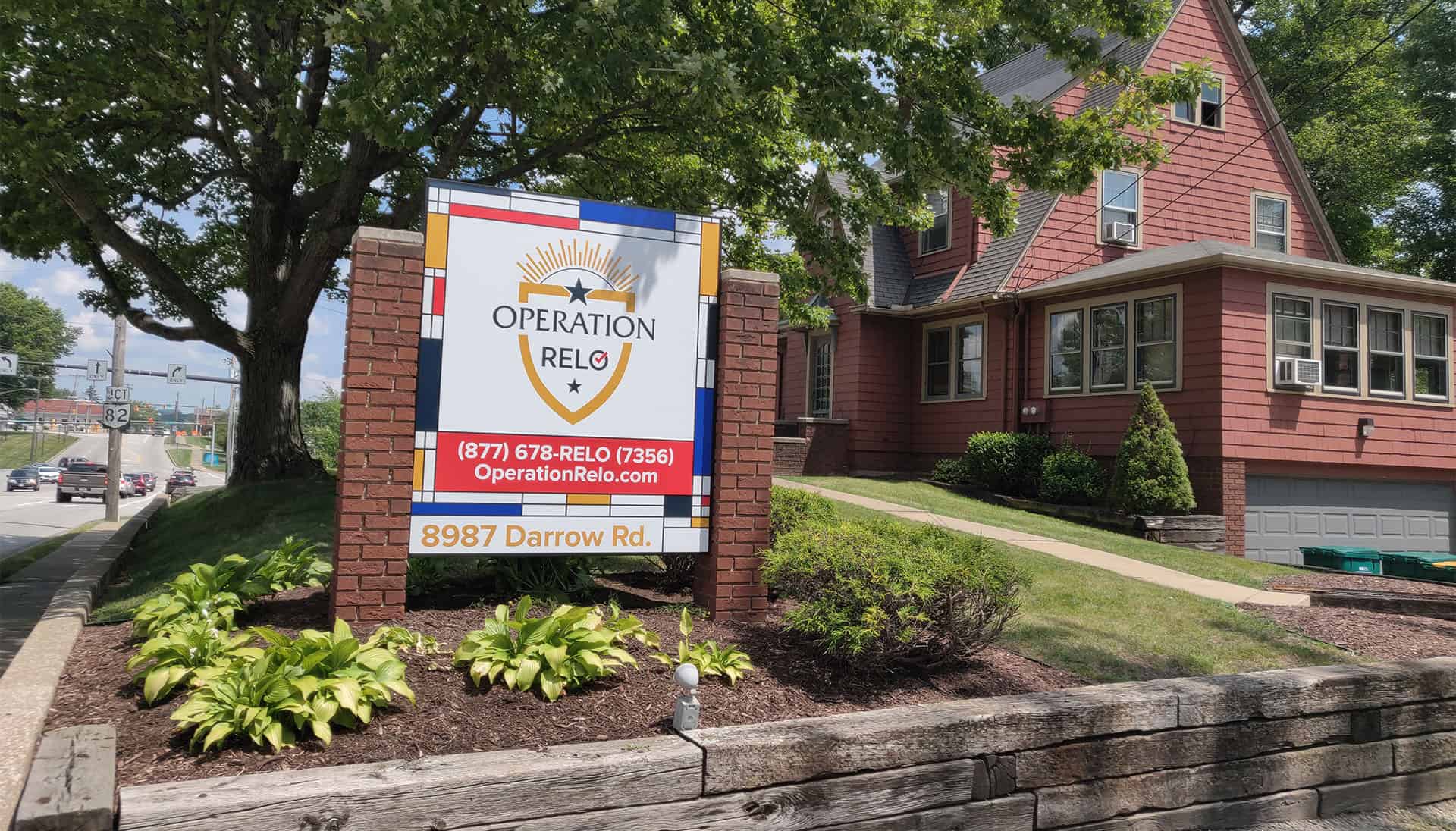Our Services

Selling Used Possessions
When downsizing, most people want to get the best prices possible for their used stuff while going through the least amount of hassle. How much you care about the prices versus hassle factors will have a big influence on the plan we develop for you.
As you think through the options, it’s useful for you to know if your items have market appeal. To get a sense, try our online quiz. https://www.operationrelo.com/blog/how-to-know-if-your-household-possessions-are-worth-a-small-fortune/
In order to extract the potential profits from your used possessions, there are many ways to go. The traditional methods are estate sales and consignment shops. More recently, the internet, changing millennial attitudes and COVID have provided other strategies, which are more focused on selling individual items with a targeted strategy.

We have conducted all of these types of sales, and very frequently clients choose a combination of them. For example, they may choose to start by selling-in-place for 4 weeks and then conduct a Saturday tag sale event, and then a cleanout, possibly sending a few choice items to consignment.
Estate Sales (a.k.a. tag sales, garage sales, yard sales) During these types of sale, the possessions stay at the home, and the public is invited with significant advertising to purchase them there, usually in one or two days over a weekend.
Before the sale, we set up the items in the house creating a mini-retail environment. We group similar items, display them on tables, and set prices. The sale is advertised on-line, in local papers, and with yard signs throughout the neighborhood. We manage the sale from beginning to end, including payments and pickups. To ensure our incentives are aligned, we pass through the costs, which generally are labor, advertising, permits, and security.
The advantage of these types of sales is that they’re fast. Set-up generally takes 7 to 10 days, and the sale itself is completed over a weekend. Tag sales also tap into a sub-culture. Buyers often look at these sales as social events, meeting others who also value older items giving each other tips and encouragement.
The disadvantages are a) Large groups of people will be tracking through the house; b) The prices tend to be lower than you would get from the Sell-In-Place alternative; c) They aren’t particularly COVID-friendly with large groups of people handling merchandise and cash; and d) The documentation is looser. Given how fast everything is moving, the receipt will often say something like “Misc. tools”, although you can call-out more valuable items for special treatment.
The key to success: Advertise aggressively and maintain a carnival atmosphere, which excites buyers and encourages additional sales.
Sell-In-Place
Another strategy which is growing in popularity is to market and sell individual items from the house using internet-based targeting. This involves posting those individual items online and encouraging up sales when the buyers are picking up. This was already a growing trend, and COVID concerns super-charged it.
This starts with researching the market values, photographing, and posting individual items on a variety of online sites that attract significant buying audiences. We then entertain bids online, negotiate, and close transactions by appointment. We manage the whole process for you. For the most part, we know who the buyers are and have much more detail on which items were sold, providing more detailed records.
The advantages of Sell-In-Place are a) Better prices. We can appeal to a broader audience with a keener interest in your individual item. We also can appeal to collectors who are out-of-state for shippable items. b) More controlled access to the house via appointments; and c) Better records.
The main disadvantage is time. It takes many weeks, sometimes months to get this all done. Also, we will need access to the home on a regular basis. It works a lot better if this is part of a larger set of projects, such as a move, cleanout or repairs since making special trips to the house for a pickup may not be cost justified.
The key to success is patience. Not every buyer out there needs your special treasure just at this moment, but using the internet, we can appeal to many more people than a local garage sale. If you’re willing to wait, we can eventually find that person looking for that special baseball card or college collectable.
Warehouse Sales -- Move, store & sell.
There are situations where the owner just wants everything out of the house quickly but feels their items are valuable enough that they “can’t just give them away.” This may happen when there is a real estate deadline or when a family member simply can’t tolerate the thought of strangers sorting through the household goods, especially in front of the neighbors.
This option involves us moving, storing, and selling the items under agreed-to profit sharing terms for an agreed-to period of time. We do this with individual online listings, but also with events like warehouse sales. After the agreed to time, you can either retrieve the items or we dispose of them, usually at our cost. The advantages to this approach are a) The house gets emptied, fast; b) There is a continued selling effort; c) No strangers come to the house. The disadvantage is the additional costs of the move and storage.
Consignment Shops
In some ways the Warehouse Sales approach is our version of consignment, but we also work with many great shops that will take some or all of your items, usually located in retail locations. They depend on a constant flow of new items to attract their customers. To manage costs, they often don’t keep regular hours. They sometimes will buy out an entire room or even a household of items, netting out their moving and storage costs. They are focused on clearing their inventories quickly, so they often have aggressive markdown schedules.
The advantages to consignment shops are that the items are out of the house quickly and that there is still upside sales potential. The downsides are that it is hard to track, and your returns are likely to be modest.
Auctions
Whether it’s in-home, off-site, online, or traditional, the opportunity for an auction versus a straight sale is available. This of course involves an auctioneer. Auctioneers have a bit of celebrity status in their circle of influence. They draw an audience, work the crowd, and close a sale decisively. They also are licensed and regulated.
For an in-home auction, on the day of the sale, the auctioneer walks through the house with a microphone taking bids on various items as they go. It’s a group dynamic. For example, the auctioneer may ask the assembled, “How much will you bid for the entire contents of this closet?” Auctions tend to attract dealers with their own shops, who will offer lower prices to cover their costs, but they buy more.
The advantages of on-site auctions are that a) Fewer people are in the house because they must register; b) There are often fewer items left over at the end because we are taking bids on, say, an entire garage unit or a whole closet, although often for a low price; c) This process goes even faster, usually < 7 days of set-up and 4 hours for the auction itself; d) the auctioneer usually has their own followers, which justifies their fees; and e) they bring their own scribe giving better documentation. The disadvantages are largely prices received and costs. There are fewer people attending in a more compressed period of time. And you pay the auctioneer for their showmanship and organization.


